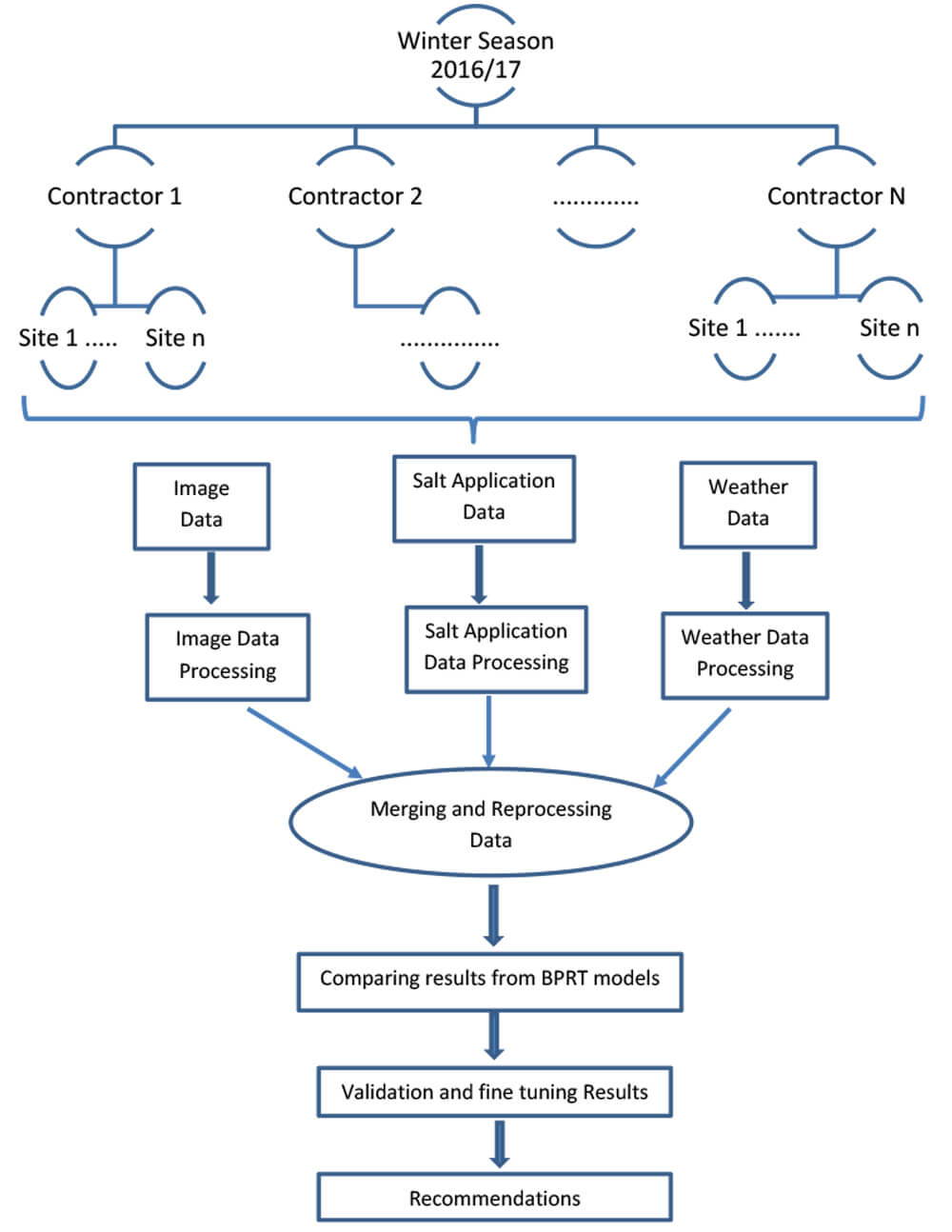September 27, 2017
SICOPS project research update:
Snow and Ice Control of Parking Lots, Platforms and Sidewalks
BY DR. TAIMUR USMAN
Safe and efficient surface transportation systems are essential for the economic and social vitality of Canada. As a critical part of the total transportation system, pedestrian facilities such as parking lots, transit platforms, and sidewalks play a vital role in providing the public the mobility and accessibility they need in their day-to-day life. However, in Canada, the safety of these pedestrian facilities could be significantly compromised due to adverse winter events.
According to Health Canada Report (2008) and Morency et al. (2012), occurrences of slips and falls in winter are the main contributor of over 2,000 deaths and 100,000 hospitalizations each year in Canada. To alleviate the hazards to pedestrians and drivers, various forms of maintenance operations such as plowing, deicing, and anti-icing are conducted to remove snow and ice from these facilities. While winter snow and ice control operations are essential to ensure the safety and mobility of the traveling public, they are also costly, both monetarily and environmentally.
 The project collected snow thickness and temperatures for two sites between Jan. 1 and March 30, 2017.
The project collected snow thickness and temperatures for two sites between Jan. 1 and March 30, 2017.
For instance, over $1 billion is spent annually for snow and ice control in Canada, which includes the use of over 5 million tons of salts (Environment Canada, 2004; TAC, 2001). The application of excessive amount of salts has raised concerns among environmental and regulatory agencies as well as the public about their detrimental effects on the environment and corrosive effects to infrastructure (e.g., pavement, roadside structures) and vehicles (NCHRP 577). A sensible salting strategy is therefore necessary in order to reduce the harmful effects of salt while keeping the various transportation facilities safe. The maintenance of parking lots, sidewalks and platforms take a significant share of the costs and salt application (Environment Canada, 2012).
Developing sensible salting strategies is a multi-step process; one of the first steps is the development of facility-specific snow and ice control guidelines that prescribe the best methods, materials and salt application rates for various specific snow events. It is generally understood that developing the best guidelines for specific facilities requires a quantitative understanding of the snow melting performance of the materials being used and the effect of different factors within the usage environment of these facilities (e.g., roadways vs. parking lots vs. transit platforms). Furthermore, there are differences in service requirements (e.g., desirable bare pavement regain time) and traffic characteristics (e.g., only vehicular traffic vs. pedestrians-vehicle mix vs. only pedestrian, speed differences, etc.) between these facilities. A large research project entitled “Optimum Snow and Ice Control for Parking Lots and Sidewalks” was initiated five years ago by the Innovative Transportation System Solution (iTSS) Lab in the Department of Civil and Environmental Engineering of the University of Waterloo in Ontario, aiming at developing a quantitative understanding of the snow melting performance of various deicing materials in a real world setting. New guidelines for selection of snow and ice control methods, materials and application rates were developed on the basis of over 5,000 tests conducted over 100 snow events (See Landscape Trades, August 2016, page 16).
The methodology employed for field validation consists of collecting salt application data for parking lots and platforms of a variety of functional classes under a wide range of weather conditions, illustrated in the accompanying chart. Salt application and camera data for the winter season 2016/17 was provided by Viaesys, a company that offers commercial, automated salt tracking equipment, site cameras and software solutions for the winter maintenance industry. Data was processed for 94 site events covering 24 different sites from two cities in Milton, Mass. and Buffalo, N.Y., which were selected based on availability of image data from fixed cameras. The data has been integrated and the results from our preliminary analysis are very encouraging, confirming the validity of our previous efforts as summarized in a number of technical papers and past issues of Landscape Trades. The research team is currently working on investigating major factors affecting the observed performance deviations and developing adjustment factors for the application rates obtained from our previous research. These results are expected to boost the confidence of maintenance industry professionals in using the salt application guidelines.
Dr. Taimur Usman is a post-doctoral fellow at the Innovative Transportation System Solutions Lab, Department of Civil and Environmental Engineering, University of Waterloo. A large number of researchers have contributed to the success of this project, including two post-doctoral fellows, four full-time graduate researchers, and over 30 co-op students. This project has been made possible with the financial and logistic support of many organizations from both the government and the private sectors, including Landscape Ontario, GO Transit, Toronto Region Conservation Authority (TRCA), Natural Sciences and Engineering Research Council of Canada (NSERC), Ontario Ministry of Transportation (MTO), Snow and Ice Management Association (SIMA), Viaesys Inc., and a number of private contractors from across Ontario.
